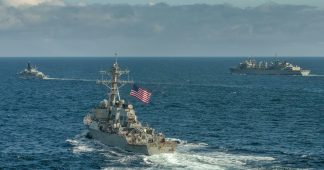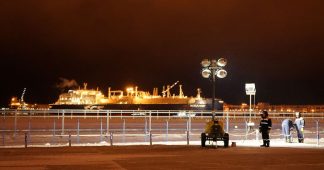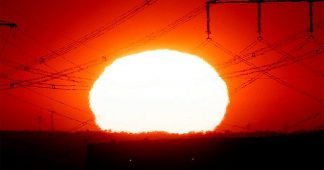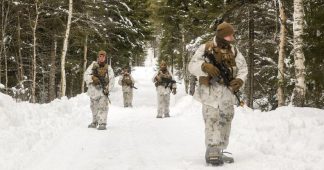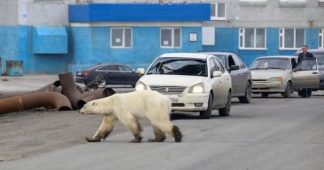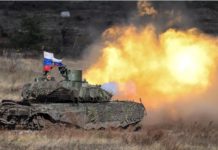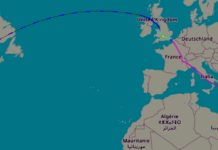By
The Russian TASS news site today cited Foreign Ministry Spokeswoman Maria Zakharova sounding the alarm over the U.S. and the global military bloc it leads, NATO, moving against Russia on its final frontier: the Arctic. Zakharova seems to have arrived at the realization that NATO, which already has Russia blockaded from the Norwegian to the Black Seas to its west and has a growing presence to its south in the Caucasus, is completing its encirclement of her nation in what the alliance calls the High North. NATO announced its plans to claim the Arctic as its sphere of influence over thirteen years ago, so Russia has no excuse to have been caught off guard.
Her words at a press briefing today had a tone comparable to that the Russian Foreign Ministry has adopted when addressing the renewed fighting in the Donbass in recent weeks: one reflective of a perception that Russia is threatened on its very borders.
“As for the possible sources of tensions in the region, the military activities of the United States and its allies in the Arctic, as well as bellicose rhetoric, should be viewed as such. It is NATO and NATO countries, including non-Arctic nations, that stage provocations there with increasing regularity….The desire to militarize the Arctic and use the region when implementing a policy aimed at containing Russia causes us legitimate concern.”
The Western press makes much of Russia updating its military capabilities in the Arctic, but neglects to point out that Russia is doing so in its territory and territorial waters. Russia has an Arctic coastline of some 15,000 miles, 53% of the ocean’s total coastline. Zakharova mentioned that Russian activities in the region are in accordance with international law but, as TASS paraphrases her comments, “the U.S. and its allies, by contrast, are raising tensions in the region.”
To illustrate which U.S. and NATO measures the Russian government is concerned with, the following two examples should prove useful.
As part of the Pentagon’s expanded interest in the Arctic, nine days ago troops with the U.S. Marine Rotational Force-Europe 21.1 “enhanced their warfighting ability above the Arctic Circle” with Norwegian NATO partner’s forces in the three-week exercise Arctic Littoral Strike in the north of Norway.
The commander of the Marines forces involved said: “This exercise demonstrated the battalion’s capability to operate inside actively contested maritime spaces, in this case arctic littoral spaces, and to provide support to joint fleet operations. The Marine Corps has demonstrated an interest in developing expeditionary advance basing capabilities in the Pacific, and we took advantage of the opportunity to exercise those concepts in the Arctic.” The reader is safe in assuming that by expeditionary advance basing capabilities is meant preparing for armed conflict on the adversary’s turf.
The report of the war games included as one of their objectives “to confront the challenges of anti-access, area-denial [A2/AD] capabilities posed by a notional peer adversary.” The not-at-all notional adversary is and can only be Russia; anti-access, area-denial capabilities in the context at hand mean Russian air and naval defenses on Russian soil and in its waters.
The joint exercise of U.S. Marines and Norwegian counterparts was motivated by what has come to be a standard explanation throughout Europe, to “always increase the alliance’s ability to implement complex operations and strengthen the collective defense of NATO.”
On a far grander scale, on May 3 the U.S. will launch the latest iteration of the Northern Edge exercise in the Arctic in Alaska. (The Pentagon preferred the term High North in its statement on the war games.) The drills will include 10,000 American troops who will “practice how the U.S. military might react if simmering tensions in the Arctic reach a boiling point.” Curious choice of metaphors given the locale.
So as to effectively eliminate any vestigial doubts as to who the exercise is practicing to fight, the Navy Times quoted the leading planner of the exercise, Air Force Lieutenant Colonel Michael Boyer, to this effect:
“We are looking at what modern warfare could be in the future, and that includes scenarios like Russian incursion into American airspace.”
For the first time this year’s Northern Edge exercise will include the participation of a carrier strike group.
The High North is shaping up to be a major battleground in the West’s confrontation with Russia
Published at antibellum679354512.wordpress.com
